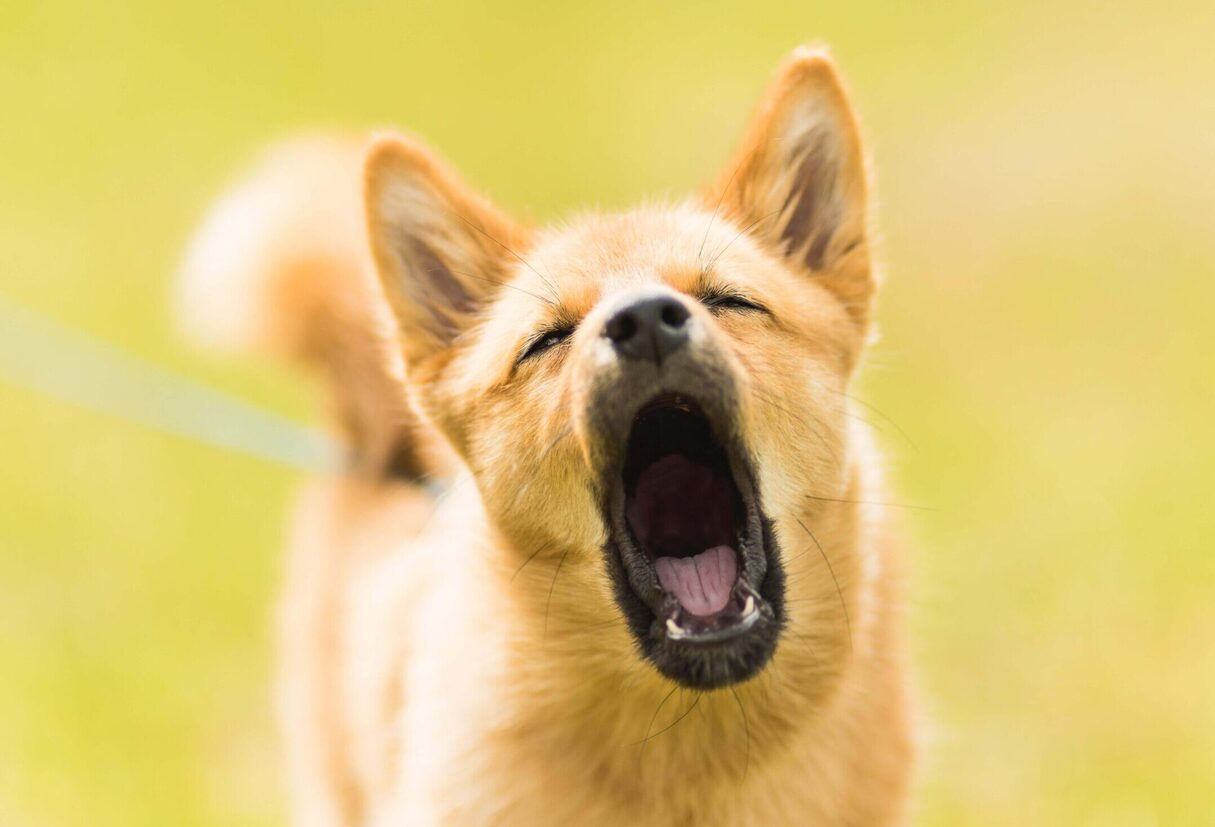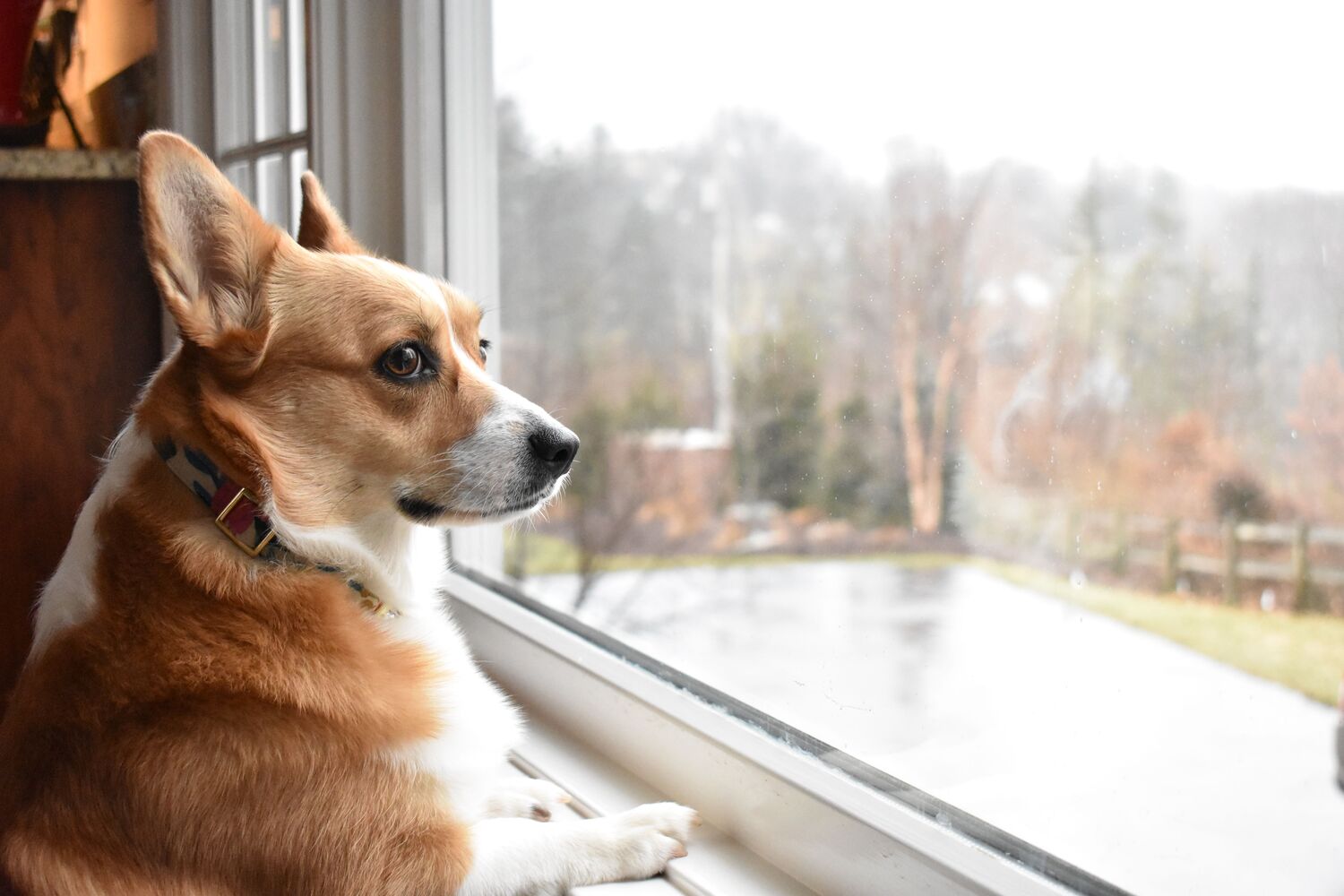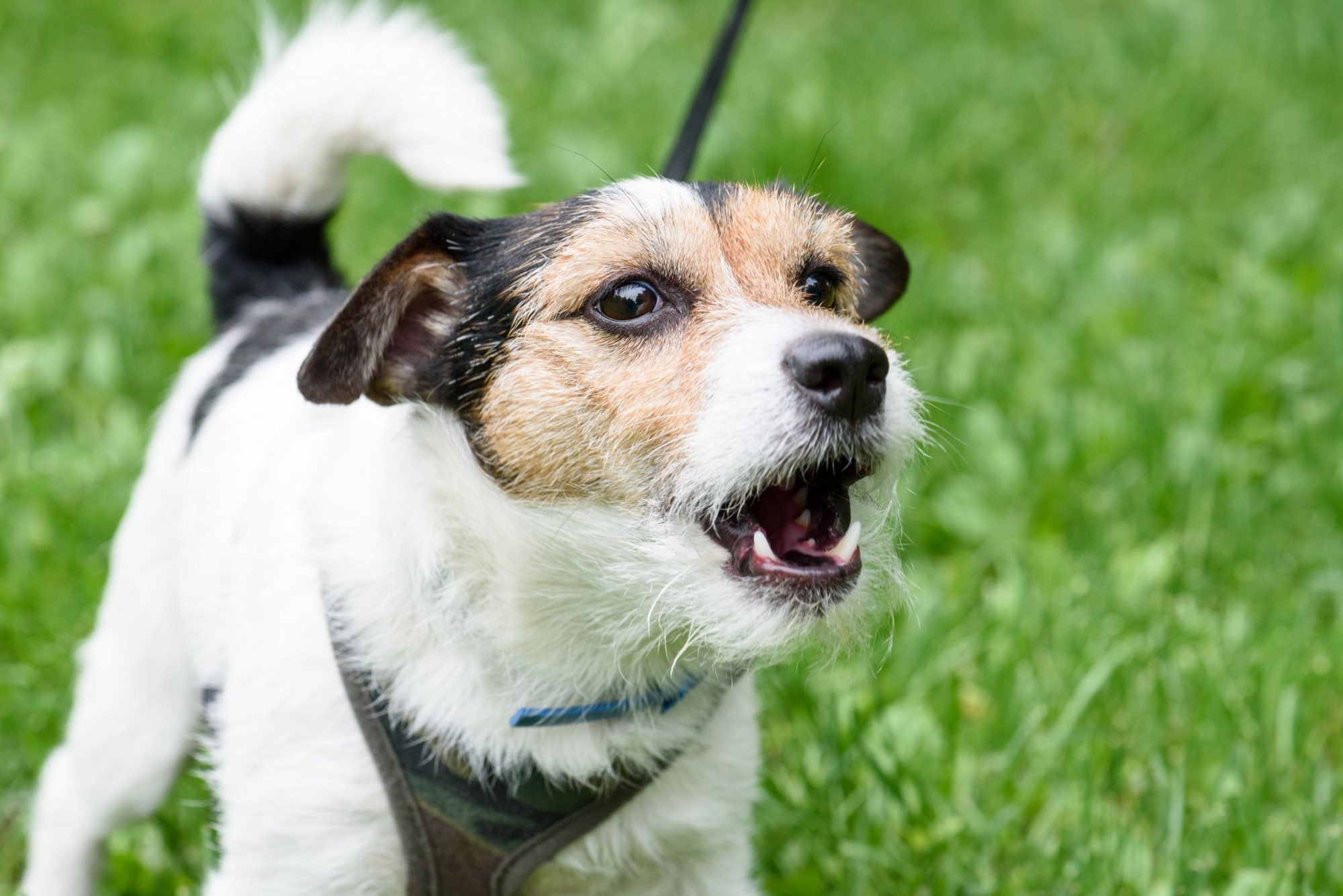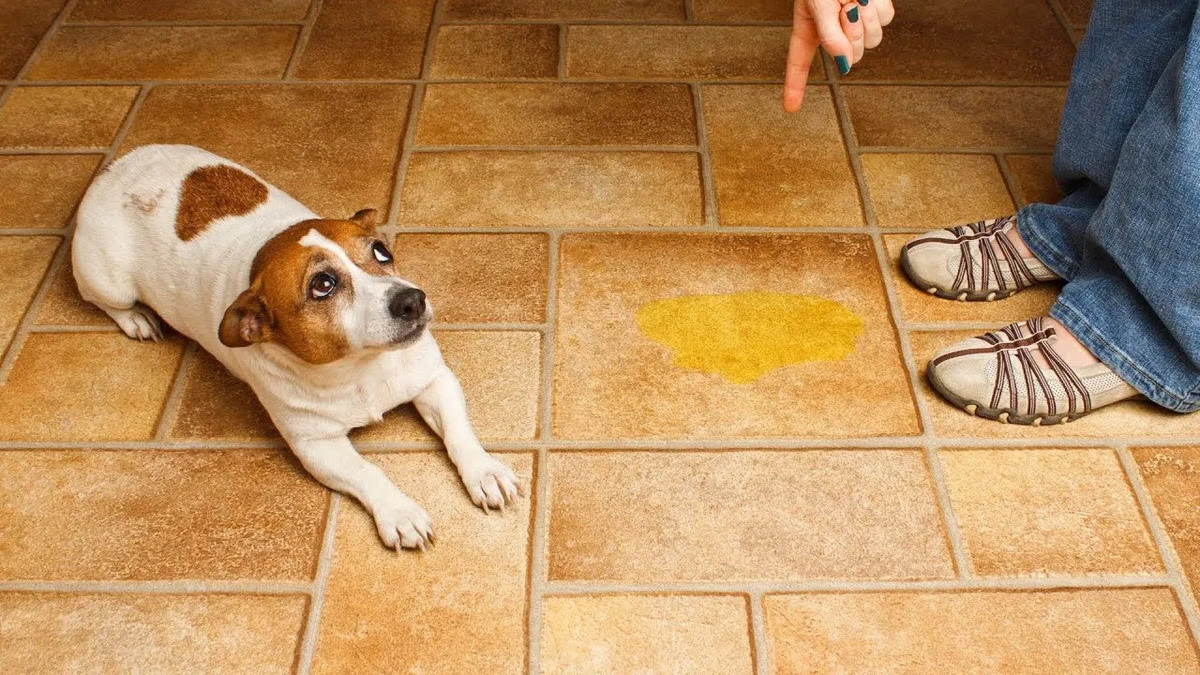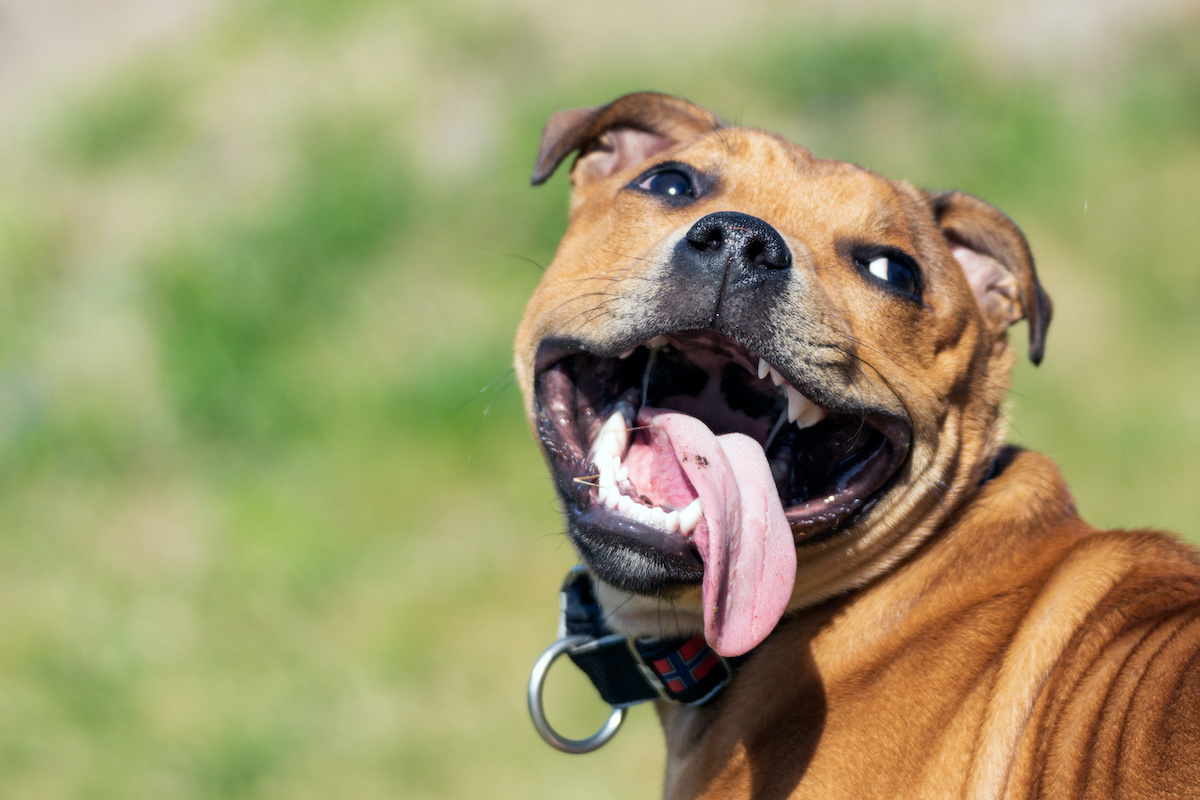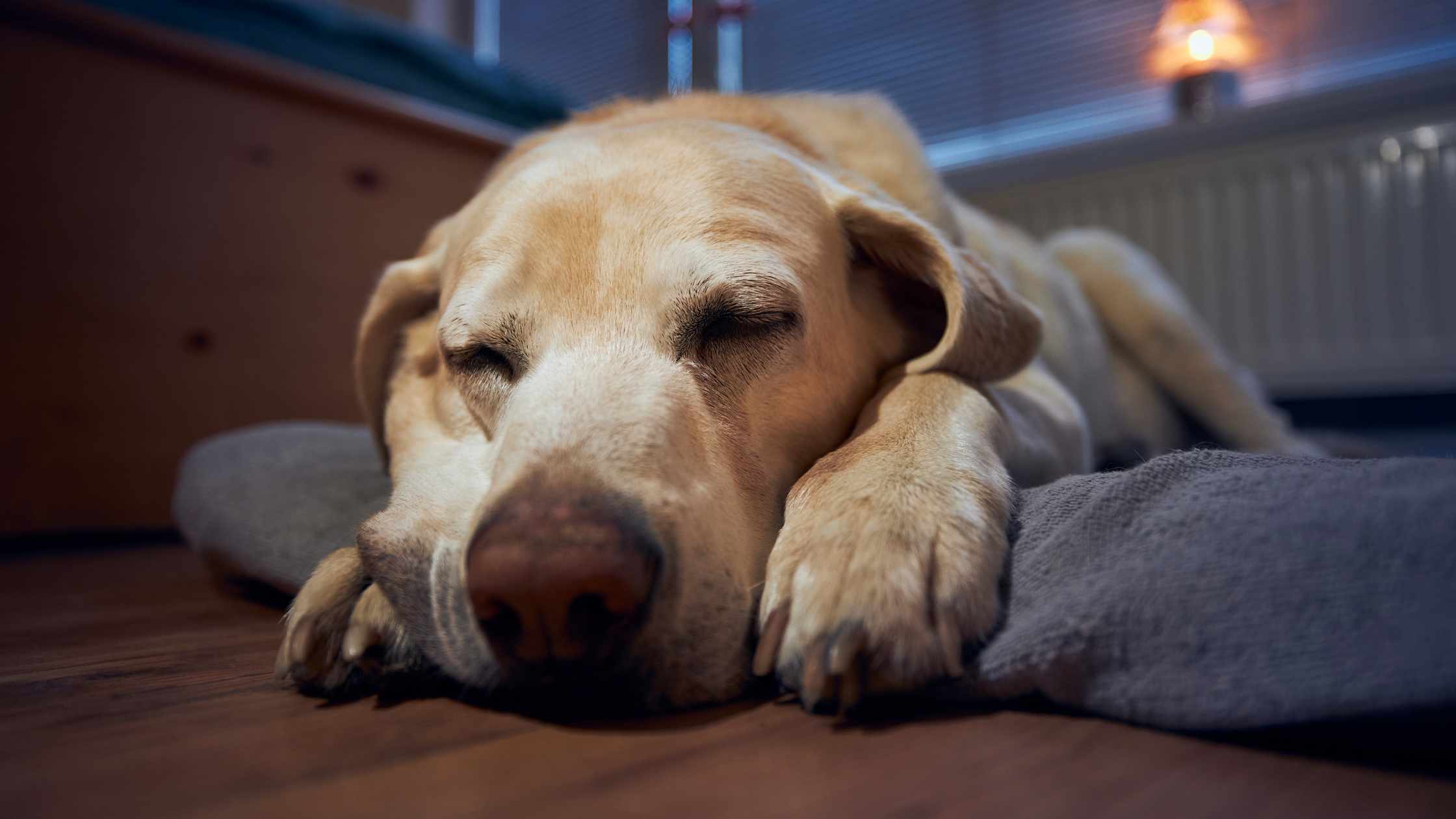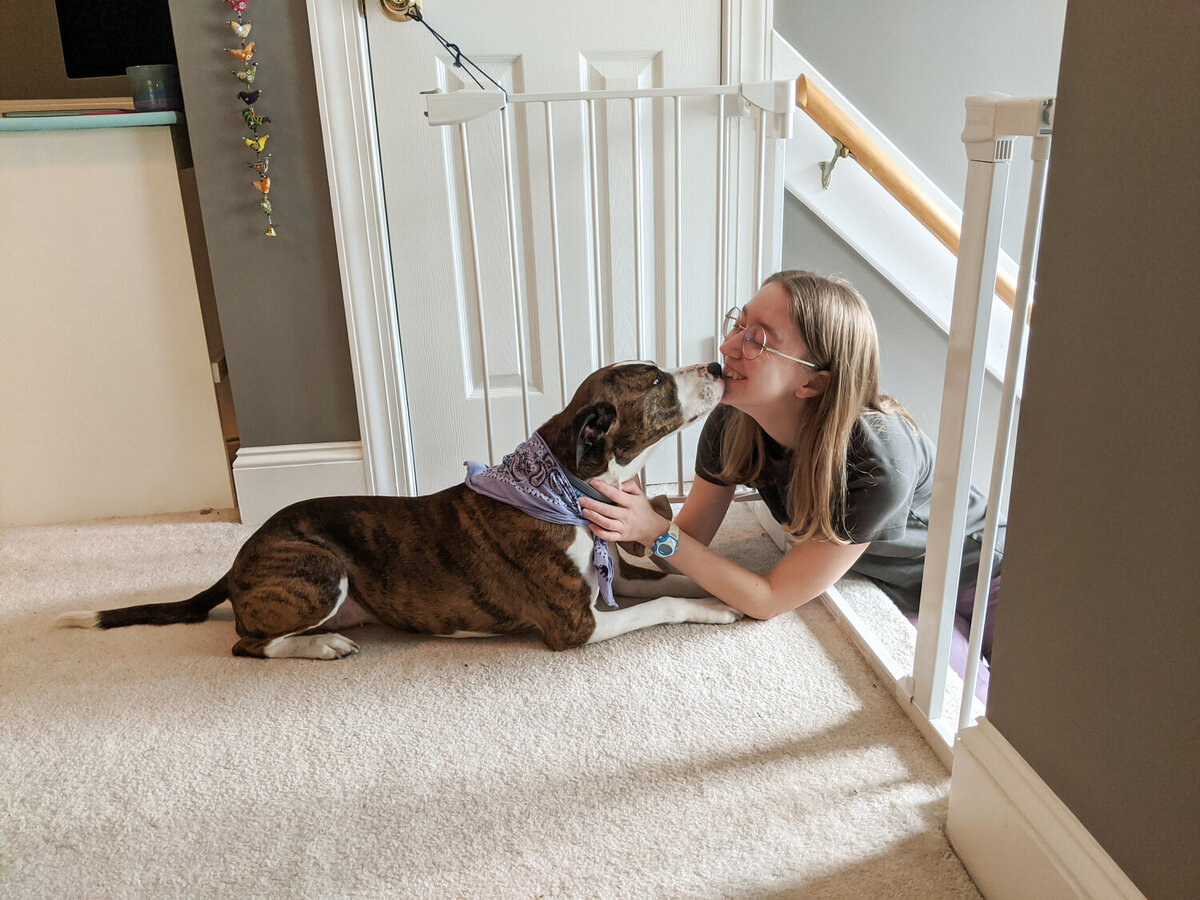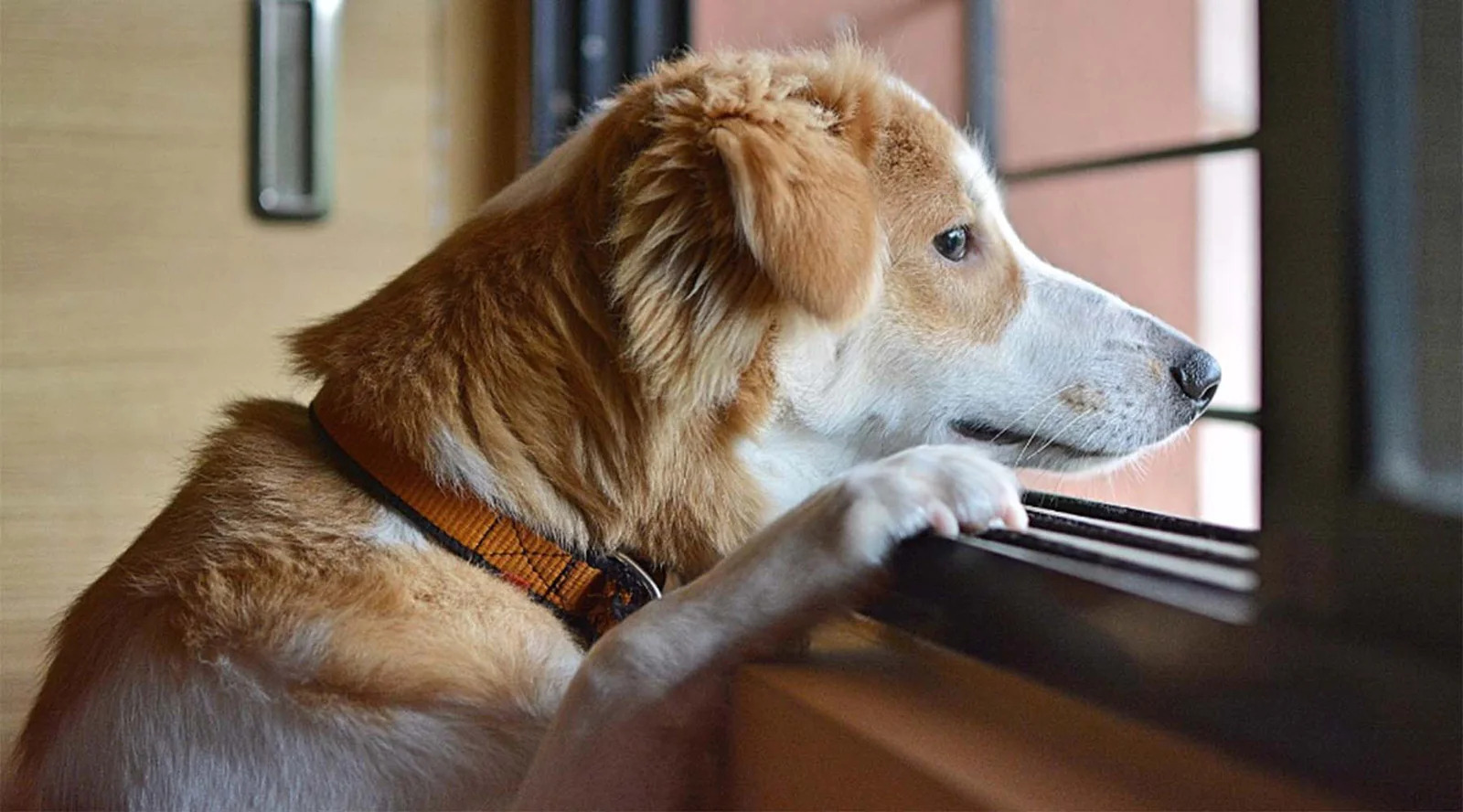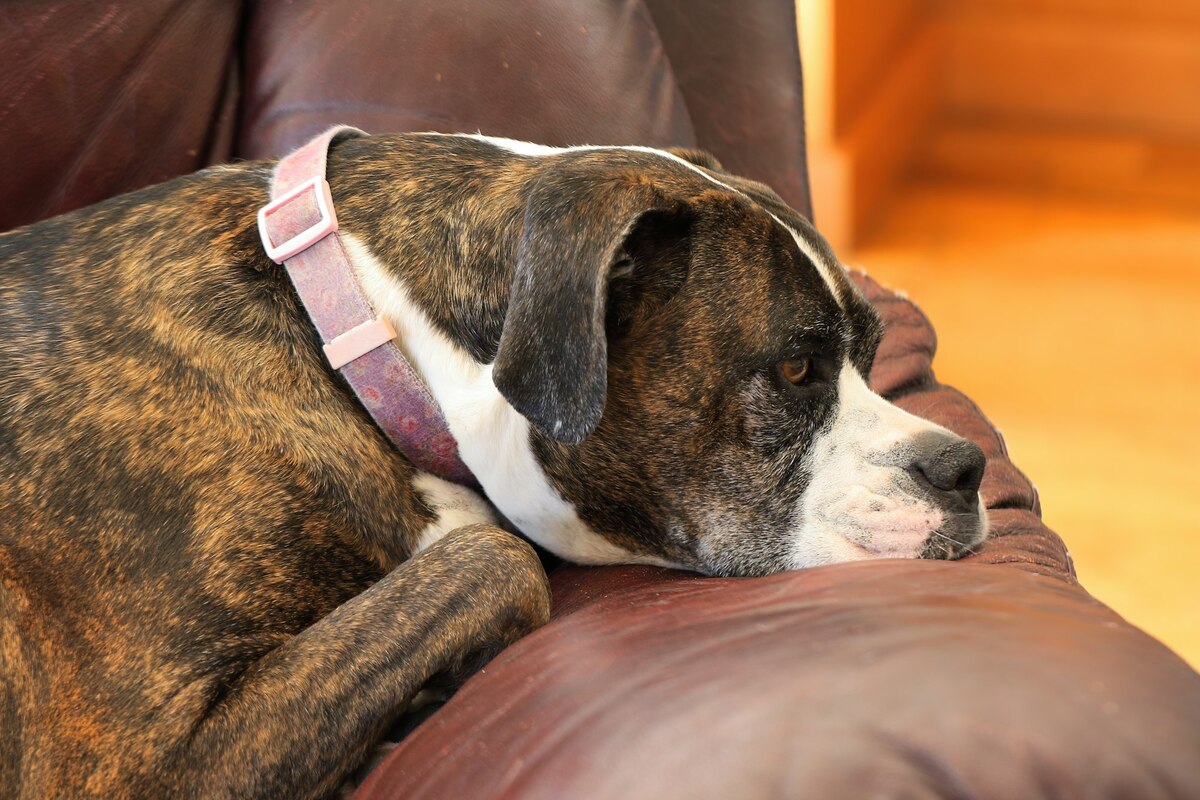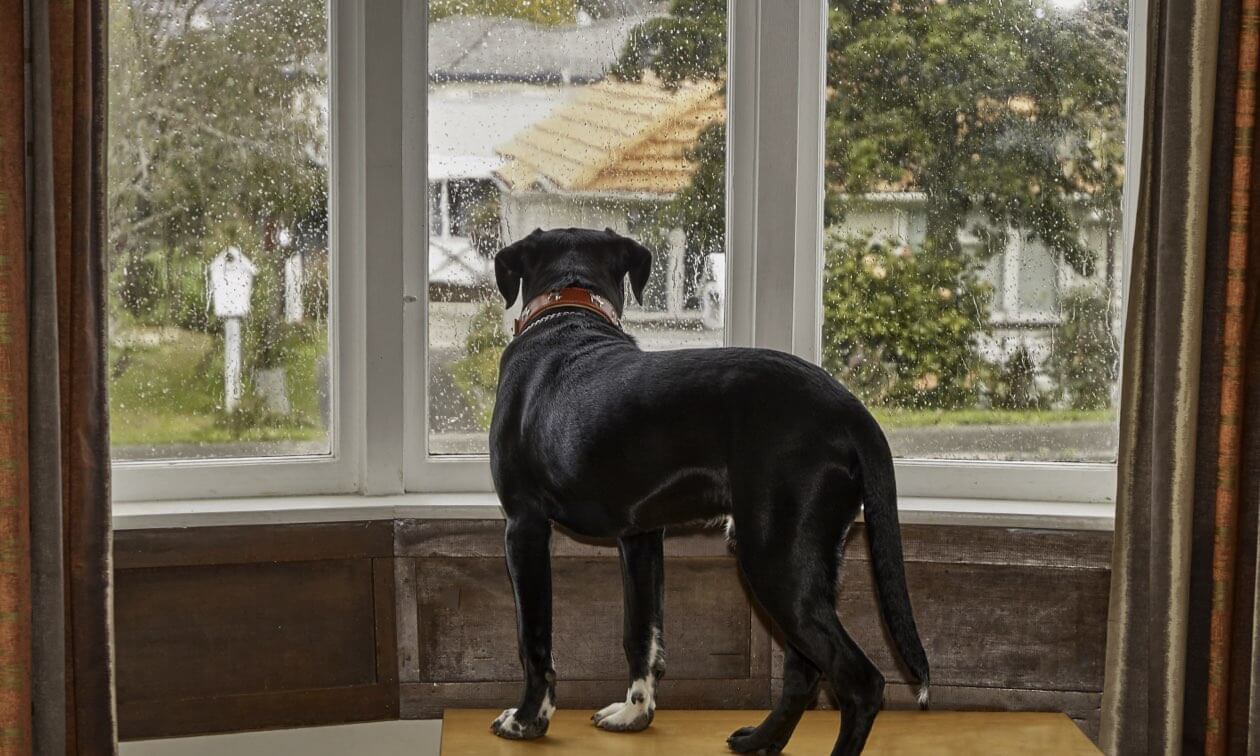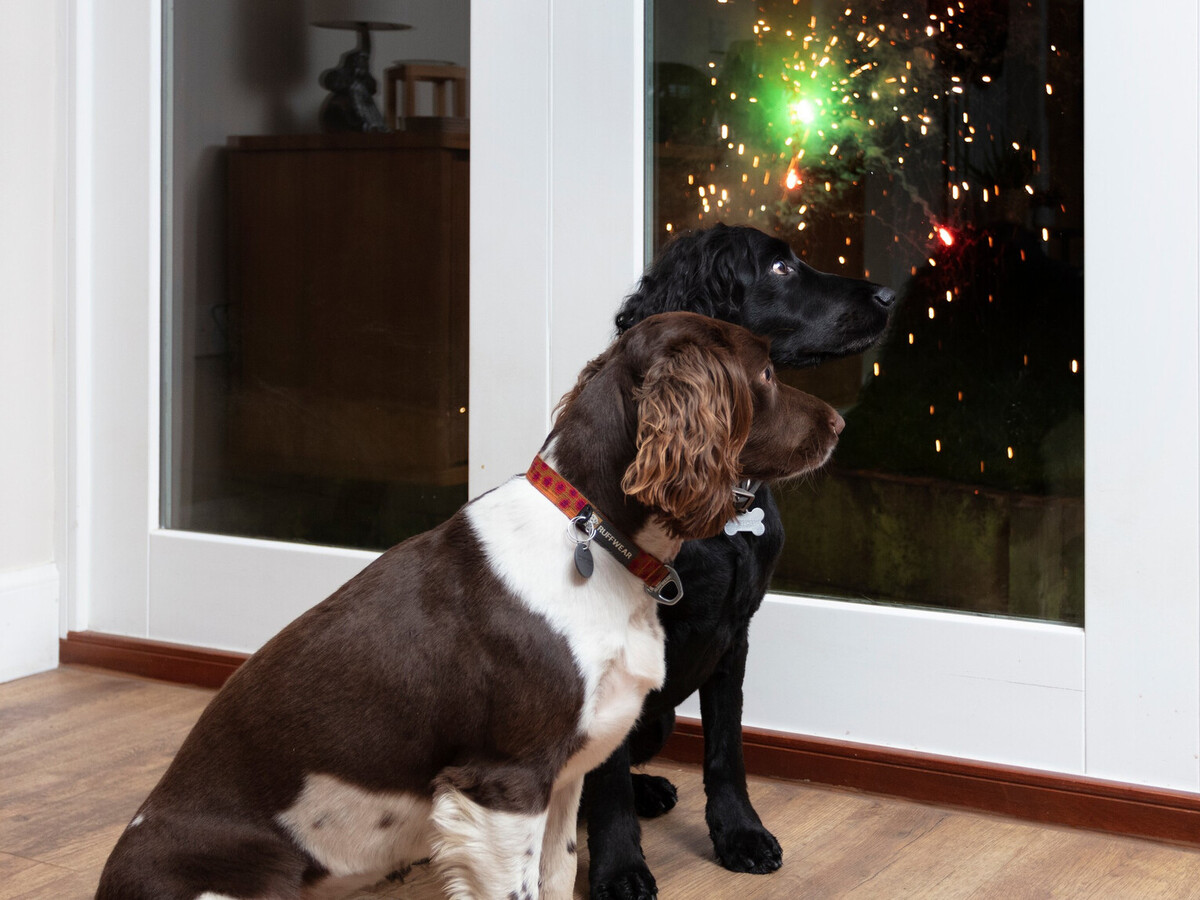Home>Health & Wellness>Behavior & Cognitive Care>How To Stop A Dog With Separation Anxiety From Chewing Everything
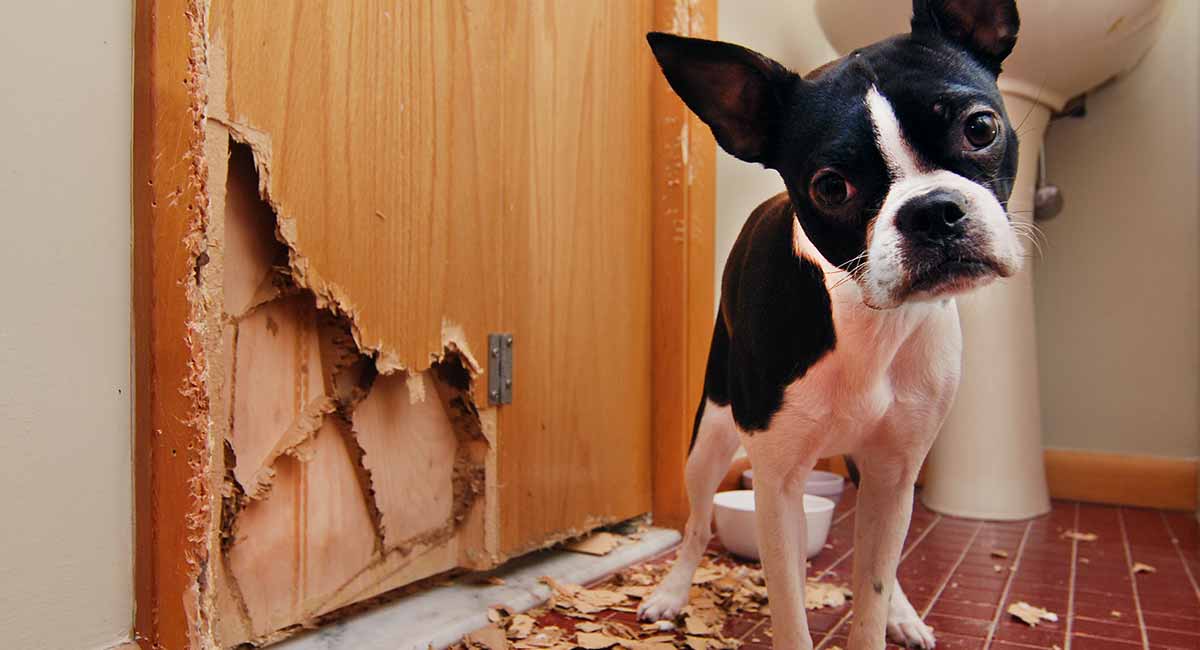

Behavior & Cognitive Care
How To Stop A Dog With Separation Anxiety From Chewing Everything
Published: January 29, 2024
Learn effective strategies to stop a dog with separation anxiety from destructive chewing. Expert tips for behavior and cognitive care.
(Many of the links in this article redirect to a specific reviewed product. Your purchase of these products through affiliate links helps to generate commission for Pawsomeoldies.com, at no extra cost. Learn more)
Table of Contents
Understanding Separation Anxiety in Dogs
Separation anxiety is a common behavioral issue in dogs, characterized by distress and anxiety when they are separated from their owners or left alone. This condition can manifest in various ways, such as destructive behavior, incessant barking, howling, or even attempts to escape. Understanding the root causes of separation anxiety is crucial in addressing this issue effectively.
Dogs are social animals that form strong emotional bonds with their human companions. When left alone, they may experience intense feelings of insecurity and fear of abandonment. This can trigger a range of distressing behaviors as they attempt to cope with the perceived separation from their pack.
It's important to recognize that separation anxiety is not a result of disobedience or spite. Instead, it stems from a deep emotional dependence on their owners for security and comfort. Factors such as sudden changes in routine, traumatic experiences, or lack of proper socialization can contribute to the development of separation anxiety in dogs.
Moreover, certain breeds are more predisposed to experiencing separation anxiety due to their inherent traits. Breeds known for their loyalty and strong attachment to their owners, such as Labrador Retrievers, German Shepherds, and Vizslas, are more susceptible to this condition.
Understanding the emotional turmoil that dogs with separation anxiety endure is essential for devising effective strategies to help them overcome their distress. By acknowledging the profound impact of this condition on a dog's emotional well-being, owners can approach the issue with empathy and patience, laying the groundwork for successful intervention.
In the following sections, we will delve deeper into the signs of separation anxiety in dogs, effective methods for providing mental stimulation, and creating a safe environment to alleviate their distress. Understanding the intricate nature of separation anxiety is the first step towards helping our beloved canine companions lead happier, more balanced lives.
Identifying the Signs of Separation Anxiety in Your Dog
Recognizing the signs of separation anxiety in your dog is crucial for early intervention and effective management of this distressing condition. Dogs suffering from separation anxiety exhibit a range of behaviors that signal their emotional turmoil when left alone. By understanding and identifying these signs, pet owners can provide the necessary support and seek appropriate interventions to alleviate their dog's distress.
-
Destructive Behavior: Dogs with separation anxiety may engage in destructive behaviors, such as chewing furniture, door frames, or personal belongings. This behavior is often focused on items with the owner's scent, as the dog seeks comfort in their absence.
-
Excessive Vocalization: Persistent barking, howling, or whining when left alone is a common indicator of separation anxiety. These vocalizations are the dog's way of expressing distress and seeking the presence of their owner.
-
Escape Attempts: Dogs with separation anxiety may attempt to escape confinement or the home in an effort to reunite with their owner. This can lead to destructive efforts to break free, potentially causing self-injury.
-
Pacing and Restlessness: When left alone, anxious dogs may exhibit repetitive behaviors such as pacing, circling, or restlessness. These actions reflect their inner turmoil and the inability to settle in the absence of their human companion.
-
Inappropriate Elimination: Accidents inside the house, particularly in areas with the owner's scent, can indicate anxiety-related behavior. Dogs may urinate or defecate indoors as a response to the distress of separation.
-
Excessive Salivation: Some dogs may excessively drool or pant when left alone, displaying physical signs of anxiety and stress.
-
Exaggerated Greeting Behavior: Upon the owner's return, dogs with separation anxiety may display exaggerated greeting behaviors, such as jumping, licking, and seeking constant physical contact. This reflects their intense relief at the reunion and their fear of being left alone again.
By being attuned to these signs, pet owners can gain insight into their dog's emotional state and take proactive measures to address separation anxiety. Early recognition of these behaviors enables owners to seek professional guidance, implement behavior modification techniques, and create a supportive environment to help their canine companions cope with and overcome separation anxiety.
Providing Proper Exercise and Mental Stimulation
Ensuring that your dog receives adequate physical exercise and mental stimulation is paramount in addressing separation anxiety. Regular exercise not only contributes to your dog's physical well-being but also plays a crucial role in managing their emotional state. Engaging in physical activities helps reduce stress and anxiety, promoting a sense of calm and contentment in your canine companion.
Daily walks, interactive play sessions, and engaging in activities such as fetch or agility training provide an outlet for your dog's energy and help alleviate pent-up anxiety. These activities also foster a strong bond between you and your dog, reinforcing their sense of security and trust in your presence.
In addition to physical exercise, mental stimulation is equally vital for combating separation anxiety. Dogs are intelligent and inquisitive animals that thrive on mental challenges. Engaging their minds through interactive toys, puzzle feeders, and obedience training not only keeps them mentally sharp but also redirects their focus from feelings of distress when left alone.
Introducing enrichment activities, such as scent games or hide-and-seek with treats, can captivate your dog's attention and provide a positive outlet for their energy. Mental stimulation not only wards off boredom but also instills a sense of accomplishment and fulfillment in your dog, contributing to their overall emotional well-being.
Furthermore, incorporating obedience training and teaching new commands can boost your dog's confidence and sense of control, which are essential in managing separation anxiety. By providing mental challenges and rewarding positive behavior, you can instill a sense of security and self-assurance in your dog, reducing their reliance solely on your presence for emotional stability.
It's important to tailor the exercise and mental stimulation regimen to suit your dog's breed, age, and individual preferences. Understanding your dog's energy levels and interests enables you to create a customized routine that effectively addresses their physical and mental needs, ultimately contributing to a balanced and contented state of mind.
By prioritizing proper exercise and mental stimulation, you can significantly mitigate the impact of separation anxiety on your dog's emotional well-being. These proactive measures not only alleviate anxiety-related behaviors but also foster a resilient and confident outlook in your canine companion, empowering them to cope with periods of solitude more effectively.
Using Desensitization and Counterconditioning Techniques
Desensitization and counterconditioning are powerful behavior modification techniques that can significantly alleviate the impact of separation anxiety in dogs. These methods aim to reframe your dog's emotional response to being left alone, ultimately fostering a sense of security and calmness during periods of solitude.
Desensitization involves gradually exposing your dog to the triggers of their anxiety in a controlled and incremental manner. By systematically introducing periods of separation and gradually increasing the duration over time, you can help your dog acclimate to being alone without experiencing overwhelming distress. This gradual exposure allows your dog to build resilience and develop a more positive association with being separated from you.
Counterconditioning complements desensitization by replacing your dog's anxious or fearful response with a positive and relaxed emotional state. This technique involves pairing the experience of being alone with something enjoyable and rewarding for your dog, such as a special treat or a favorite toy. By consistently associating positive experiences with periods of separation, you can reshape your dog's emotional perception, ultimately reducing their anxiety and distress.
Implementing desensitization and counterconditioning requires patience, consistency, and a deep understanding of your dog's emotional triggers. It's essential to start with small, manageable absences and gradually increase the duration as your dog becomes more comfortable with being alone. Additionally, ensuring that your dog has a positive and enriching environment during your absence, such as providing engaging toys or soothing music, can further support the effectiveness of these techniques.
Moreover, incorporating a departure routine that is calm and devoid of emotional fanfare can help minimize your dog's anxiety. By establishing a predictable and low-key departure ritual, you can help your dog associate your absence with a sense of normalcy rather than a distressing event.
Seeking guidance from a professional dog trainer or behaviorist can provide invaluable support in implementing desensitization and counterconditioning effectively. These experts can offer tailored strategies and personalized guidance based on your dog's specific needs, accelerating the progress towards overcoming separation anxiety.
By integrating desensitization and counterconditioning into your dog's routine, you can empower them to develop a more positive and resilient outlook towards being alone. These techniques not only alleviate the distress associated with separation anxiety but also foster a sense of emotional well-being and security in your beloved canine companion.
Creating a Safe and Comfortable Environment for Your Dog
Creating a safe and comfortable environment is essential in alleviating the distress associated with separation anxiety in dogs. By establishing a nurturing and secure space for your canine companion, you can mitigate their anxiety and promote a sense of calmness during periods of solitude.
One of the fundamental aspects of creating a safe environment for your dog is ensuring that their living space is enriched with comforting elements. Providing a designated area, such as a cozy bed or a favorite blanket, offers a familiar and reassuring spot for your dog to retreat to when alone. This designated space serves as a sanctuary, imbued with their scent and a sense of security, helping to alleviate their anxiety in your absence.
In addition to a comforting resting place, incorporating interactive and engaging toys can significantly contribute to your dog's emotional well-being. Toys that dispense treats or provide mental stimulation not only ward off boredom but also redirect your dog's focus, offering a positive and enjoyable outlet for their energy. These toys serve as a source of entertainment and comfort, effectively reducing anxiety-related behaviors and promoting a sense of contentment.
Furthermore, creating a soothing ambiance within your dog's environment can have a calming effect on their emotional state. Playing soft, soothing music or utilizing white noise machines can help mask external sounds and create a tranquil atmosphere, minimizing potential triggers for anxiety. This auditory stimulation can provide a sense of reassurance and relaxation, fostering a serene environment for your dog.
Establishing a predictable routine and maintaining consistency in your interactions with your dog is paramount in creating a safe and comfortable environment. Dogs thrive on predictability and structure, and a consistent daily routine can instill a sense of security and stability. By incorporating regular feeding times, exercise sessions, and comforting rituals, such as gentle grooming or soothing massages, you can reinforce a sense of predictability and safety for your dog.
Moreover, ensuring that your dog has access to natural light and outdoor views can contribute to their well-being. Allowing natural light to filter into their living space and providing opportunities for visual stimulation, such as observing outdoor activities, can enrich their environment and alleviate feelings of confinement and isolation.
By creating a safe and comfortable environment tailored to your dog's needs, you can significantly mitigate the impact of separation anxiety. This nurturing space not only provides physical comfort but also fosters a sense of emotional security, empowering your dog to navigate periods of solitude with resilience and tranquility.
Seeking Professional Help and Support
Seeking professional assistance is paramount in addressing the complex and challenging issue of separation anxiety in dogs. While proactive measures implemented at home play a crucial role in supporting your dog, the guidance and expertise of a qualified professional can offer invaluable insights and tailored strategies to effectively manage and alleviate your dog's distress.
Professional support for separation anxiety often involves collaboration with certified dog behaviorists, trainers, or veterinarians specializing in behavioral care. These professionals possess a deep understanding of canine behavior and emotional well-being, enabling them to assess your dog's specific triggers and responses associated with separation anxiety.
A comprehensive evaluation of your dog's behavior and environment allows these experts to formulate a personalized behavior modification plan tailored to your dog's unique needs. This individualized approach takes into account factors such as your dog's breed, temperament, past experiences, and the dynamics of your household, ensuring that the intervention strategies are well-suited to address the underlying causes of separation anxiety.
Behavior modification plans developed by professionals often encompass a multifaceted approach, integrating desensitization, counterconditioning, and positive reinforcement techniques. These strategies are implemented in a systematic and structured manner, gradually acclimating your dog to periods of separation and reshaping their emotional responses to being alone.
Moreover, professional guidance extends beyond behavior modification, encompassing holistic support for both the dog and their owners. Certified professionals provide invaluable coaching and resources to pet owners, equipping them with the knowledge and skills to implement the recommended strategies effectively. This collaborative approach empowers pet owners to play an active role in supporting their dog's emotional well-being and fostering a harmonious bond based on trust and understanding.
In some cases, the involvement of a veterinarian specializing in behavioral care may also include a comprehensive health assessment to rule out any underlying medical conditions that could contribute to your dog's anxiety. Addressing potential health issues ensures a holistic approach to managing separation anxiety, encompassing both behavioral and physiological aspects to optimize your dog's well-being.
Furthermore, professional support offers ongoing monitoring and adjustments to the behavior modification plan as your dog progresses. This adaptive approach allows for fine-tuning of strategies based on your dog's responses, ensuring that the intervention remains effective and tailored to their evolving needs.
By seeking professional help and support, pet owners can access a wealth of expertise and resources dedicated to addressing separation anxiety in dogs. This collaborative approach not only enhances the well-being of your canine companion but also fosters a supportive and informed environment, empowering both you and your dog to navigate and overcome the challenges associated with separation anxiety.
